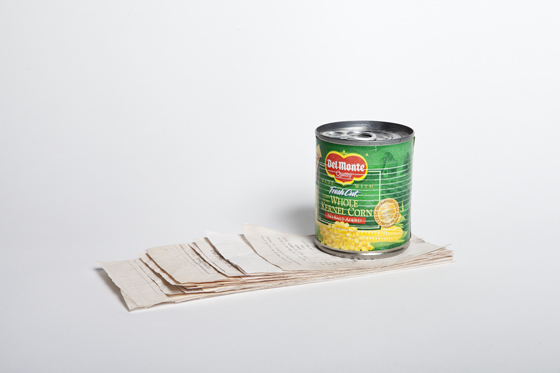According to Wikipedia, or “a lecturer’s best friend” as Dick Hebdige described it one day… the term Superposition refers to a principle that states; “for all linear systems, the net response at a given place and time caused by two or more stimuli is the sum of the responses which would have been caused by each stimuli individually.” A Quantum Superposition “holds that a physical system – such as an electron – exists partly in all its particular, theoretical possible states simultaneously; but when measured, it gives a result corresponding to only one of the possible configurations.” For electrical circuits, Superposition is described as: “for a linear system, the response (voltage or current) in any branch of a bilateral linear circuit having more than one independent source equals the algebraic sum of the responses caused by each independent source acting alone…” Wiktionary describes the term more simply as “the placing of one thing on top of another.”
“That means that the net amplitude caused by two or more waves traversing the same space, is the sum of the amplitudes which would have been produced by the individual waves separately. For example, two waves traveling toward each other will pass right through each other without any distortion on the other side.”
This must be where that one crazy wave that seems to come out of nowhere once every surf session originates from.. overhead + overhead = DOUBLE overhead.. brah.
I’ve been thinking about this principle in one form or another for quite a while I suppose, especially with my Soundsystem project. With each turntable hooked up to an independent transmitter, and the audio source being a vintage Panasonic RX-5030 boom box (as seen in the seminal film Wild Style), the audio is mixed by tuning one transmitter into the frequency that the boom box is set to, and then tuning the other transmitter out of that particular frequency. At a certain point, there are potentially two transmissions being sent on the same frequency, which is when things get a bit hairy. The volume of the audio source is particularly important; the louder audio signals seem to come through more clearly and with less chatter than the quieter ones. When there is no audio signal, but the transmitters are still powered on, I can twist the dials on the transmitters and cycle through radio stations on the boom box without being anywhere near it.. just like a Jedi.
I am intrigued by static, as it is perhaps an audible sum of the variety of electromagnetic radiation floating around in the immediate surrounding space. This is why when you tune a transmitter, you search for the quietest frequency; your transmission will not have to compete with anything else. When your cell phone receives a text message, you can hear that through your radio. Last summer in the metal shop at Ox-Bow when I was building The Distance Between Two Coconuts I discovered that when I had a transmitter running with no audio, and I flicked the lights on, I could hear that too.
Fortunately the Soundsystem is already built, and I just need to fire it up and rehearse before I bring it to the New Wight Gallery at UCLA in a few days. I had a bit of a panic attack last night when I realized that the annual Call For Entries exhibition which I was selected for at the Santa Barbara Contemporary Arts Forum opens on October 21st. That will feature a new body of work… that I won’t be able to start on until I finish building out my new studio (it’s coming along nicely…). Hopefully the summation of these waves will amount to something that I can not only ride; perhaps I’ll get shacked… brah…
“Superpositions is an exploration of interference as a model for art making and reception. The glitch, stutter, moiré, palimpsest, thwarted expectation, and feedback loop all fall within this purview. The exhibition includes the work of 26 international artists.”
It has been organized and curated by Jonathan Apgar, Lucas Blalock, Devin Kenny, and Sean Raspet. And many thanks to my friend Michelle Hyun who gave me some valuable input on the text I provided for the catalog.
I’m pleased to have been selected among this roster. The exhibition opens on Thursday, September 27th at 5 pm:
Nobutaka Aozaki – Hunter College – New York
Julia Benjamin – Columbia University – New York
Céline Berger – Rijksakademie van beeldende kunsten – Amsterdam
Jenn Berger – University of California – Irvine
Ben Bigelow – Stanford University – Palo Alto, CA
Lea Cetera – Columbia University – New York
Anne de Vries – Rijksakademie van beeldende kunsten – Amsterdam
Carey Denniston – Hunter College – New York
Rubén Grilo – Rijksakademie van beeldende kunsten – Amsterdam
Nils Guadagnin – Glasgow School of Art – Scotland
Lauren Hall – Glasgow School of Art – Scotland
Jesse Harding– University of California – San Diego
Anna Hawkins – Concordia University – Montreal, Canada
Jibade-Khalil Huffman – University of Southern California – Los Angeles
Martin Kohout – Städelschule – Frankfurt am Main, Germany
Anouk Kruithof – Photo Global at the School of Visual Arts – New York
Lia Lowenthal – Bard College – Annandale-on-Hudson, NY
Rachel Malin – Rutgers University – New Brunswick, NJ
Frankie Martin – University of California – San Diego
Evan Nesbit – Yale University – New Haven, CT
Magali Reus – Rijksakademie van beeldende kunsten – Amsterdam
Rachelle Sawatsky – University of Southern California – Los Angeles
Ben Schumacher – New York University – New York
Rimas Simaitis – University of California – Santa Barbara !!
Thomas Simon – Virginia Commonwealth University – Richmond, VA
Brad Troemel – New York University – New York

